This healthy breakfast recipe features spiralized rutabaga noodles (aka swede noodles) cooked in a skillet and topped with eggs. It comes together in just 20 minutes and makes a great addition to weekend brunch or a quick weekday breakfast. Rutabaga noodles are a lower carb swap for potato hash browns and are packed with fiber, vitamins, and minerals.
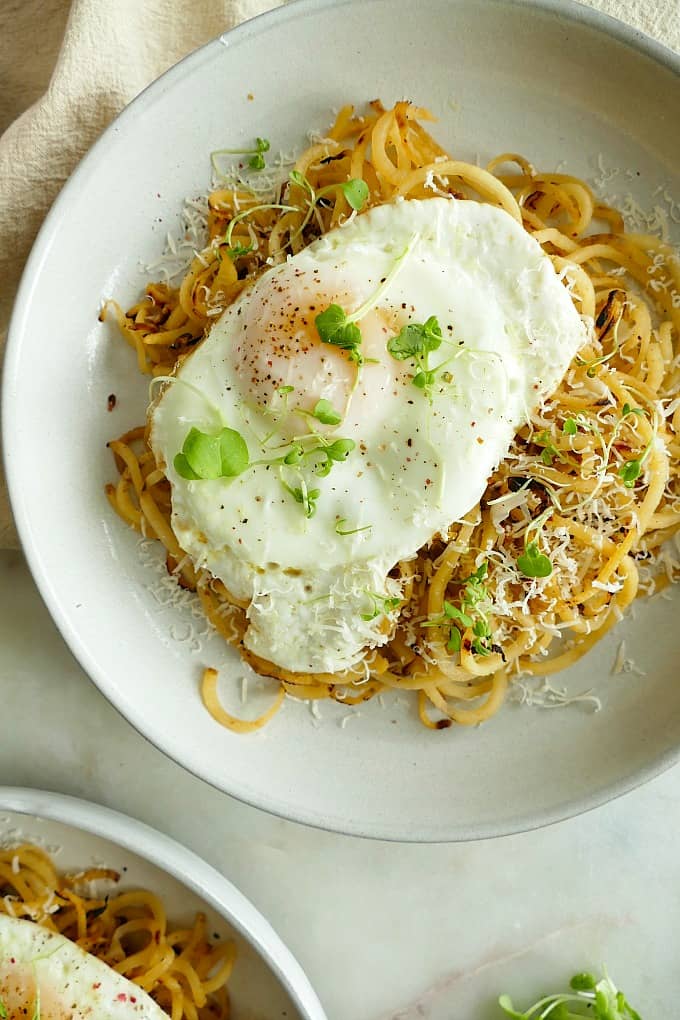
This post may contain affiliate links. For more information, see my affiliate disclosure.
I’m a breakfast person. I LOVE going out for breakfast, making breakfast, and eating breakfast foods at any time of the day. My love for this meal comes from all of the family memories I have involving breakfast. This meal always brought my family together on a Sunday morning after church or a special occasion, like Christmas, Father’s Day or Mother’s Day.
My dad would fire up the skillet and make homemade pancakes or waffles, with just a pinch of cinnamon. My brothers would make eggs and bacon. And my mom, sister, and I would slice fruit and toast English muffins. Later, we added coffee and sometimes even mimosas.
Once I starting lived on my own, I began to change my breakfasts. I learned about the importance of balanced meals in school and started to add more protein sources, fresh fruits, and smoothies to my first meal of the day. I felt better and had much more energy to power through my busy days at work and school. But of course, I still love eating my favorite breakfast foods with my family whenever we are together!
I also love coming up with easy and delicious breakfast recipes, especially those that include vegetables, whenever I can. So, I thought it was time to create something with a veggie that gets less exposure at the breakfast table, compared to the classics: potatoes, onions, and peppers. Enter: Breakfast Rutabaga Noodles.
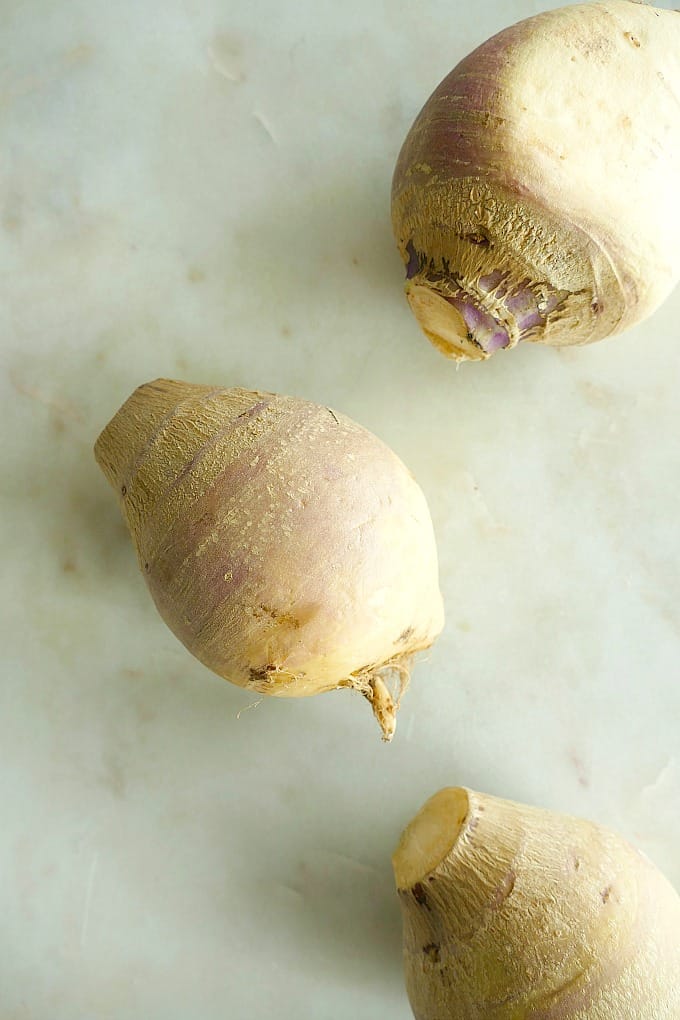
Are rutabaga good for you?
The rutabaga is a popular root vegetable in Scandinavian cuisine. In the past decade, it has become an increasingly popular substitute for potatoes. This is because rutabaga has fewer carbohydrates than potatoes and therefore may not impact blood sugar as much as potatoes. The texture of rutabaga and the color of its flesh also resemble that of potatoes.
Rutabagas are loaded with nutrients, too. One medium rutabaga has 160% of the Daily Value (DV) for vitamin C, a water-soluble nutrient that acts like an antioxidant in the body and supports the immune system.
Rutabaga Noodles Nutrition
Since rutabagas have a firm texture and round shape, they are really easy to spiralize and make into noodles. They also maintain most of their crunch when cooked. Rutabaga noodles can be swapped for regular noodles or hash browns in recipes to add more nutrients and cut back on the carbohydrate content.
Noodles made out of one medium rutabaga provide:
- Calories: 145
- Carbohydrates: 33 grams
- Dietary fiber: 9 grams
- Protein: 4 grams
- Fat: <1 gram
- Potassium: 33% of the DV
- Vitamin C: 160% of the DV
For comparison, a potato of similar size provides over 280 calories and 60 grams of carbohydrates.
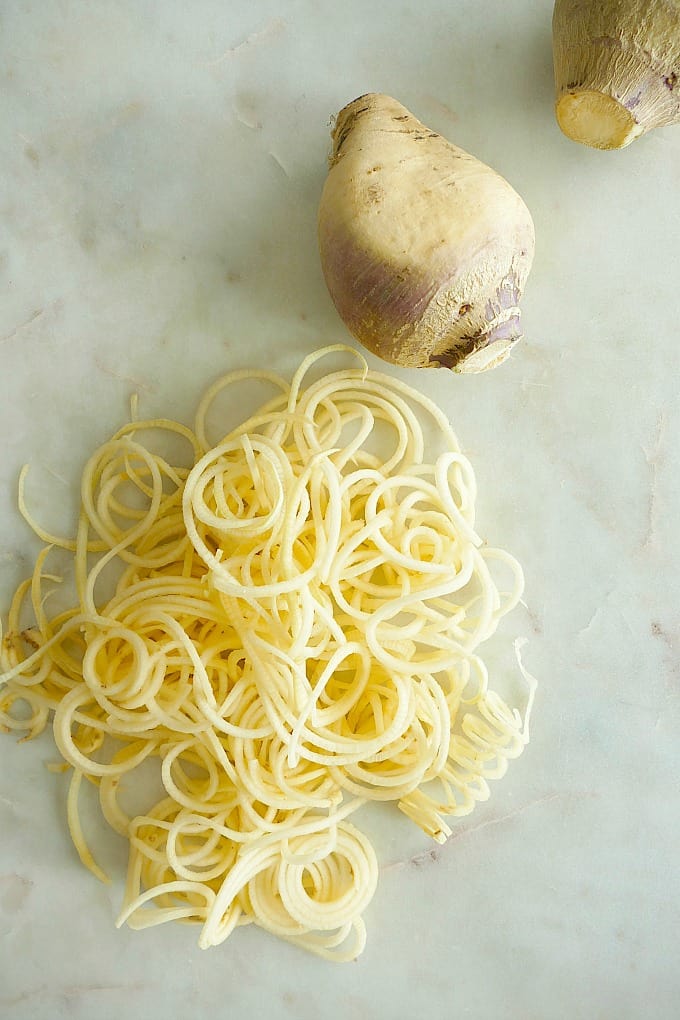
How to Make Breakfast Rutabaga Noodles
- Scrub, trim, and peel the rutabaga. Or you can leave the skin on if desired. Run the rutabaga through a spiralizer to make thin, stringy noodles. Cut the noodles into smaller pieces with a knife or kitchen scissors if needed.
- Cook the noodles in a skillet with a little olive oil, salt, and pepper.
- In the meantime, cook a few eggs in your preferred style.
- Transfer the rutabaga noodles to a plate or bowl, top with the eggs, and garnish with microgreens (optional) and parmesan cheese.

Expert Tips
- Equipment: Here is the spiralizer I use. If you don’t have a spiralizer, you can also slice the rutabaga with a julienne peeler to get thin strips that look like hash browns.
- Prep Ahead: While these breakfast rutabaga noodles are best enjoyed right away, you can spiralize the rutabaga ahead of time. Keep in an airtight container or bag in the fridge for up to 3 days.
- Toppings: I like to keep this dish simple and top with salt, pepper, a little cheese, and some greens or herbs if I have them on hand. Feel free to mix it up! Red pepper flakes, salsa, hot sauce, avocado, dukkah, and pickled red onions would all be great additions.
This dish combines two of my favorite things: breakfast and vegetables! Plus, like most of the recipes on here, it’s so incredibly easy.
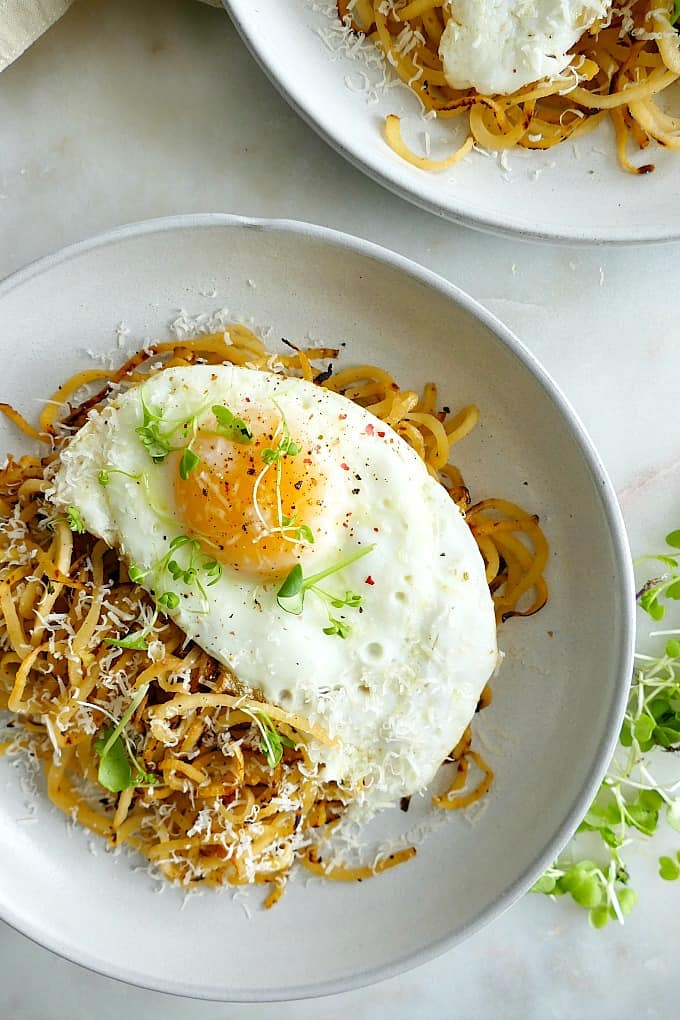
More Healthy Breakfast Recipes
If you love these rutabaga noodles, check out the similar Turnip Noodles with Eggs and Chives. You may also enjoy the Root Vegetable Hash with Eggs, Lemon Dill Kohlrabi Fritters, and Silver Dollar Sweet Potato Protein Pancakes. For more spiralized vegetable recipes, see the Spiralized Golden Beet Salad, Creamy Peanut Zucchini Noodles with Chicken, and the Sage Brown Butter Kohlrabi Noodles with Pine Nuts.
If you make this recipe, I’d love to hear how you like it! Please rate/review using the stars on the recipe card or in the comments section. While you’re here, subscribe to the weekly newsletter.
📖 Recipe
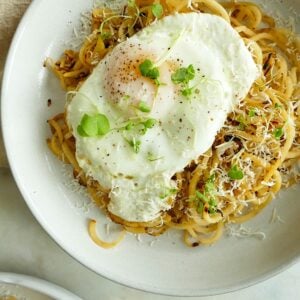
Breakfast Rutabaga Noodles
Equipment
Ingredients
- 3 small rutabaga - washed, trimmed, and peeled
- 2 tablespoon olive oil
- Sea salt - to taste
- Freshly ground black pepper - to taste
- 4 eggs - cooked to your liking
- 0.5 cup freshly grated Parmesan cheese - to taste
- Microgreens or herbs - for garnish
Instructions
- Run each rutabaga through the spiralizer. Use a knife or kitchen scissors to cut the noodles into smaller pieces if desired.
- Heat olive oil in a large skillet over medium heat, and add the rutabaga noodles. Cook for 10-12 minutes or until tender and slightly browned. Add salt and pepper to taste.
- While the noodles are cooking, prepare the eggs however you like.
- Divide the rutabaga noodles between two dishes. Top with eggs and cheese. Add microgreens or fresh herbs as garnish. Enjoy!
Notes
- Other topping ideas: red pepper flakes, avocado, salsa, pickled vegetables
- Prep ahead tips: This recipe is best enjoyed right away, but you can spiralize the noodles ahead of time. Store in an airtight container or bag in the fridge for up to 3 days.
Nutrition
Enjoy breakfast this weekend! – Lizzie
This post was originally published in January 2018. It was updated with more text and expert tips in February 2021. The recipe remains the same.

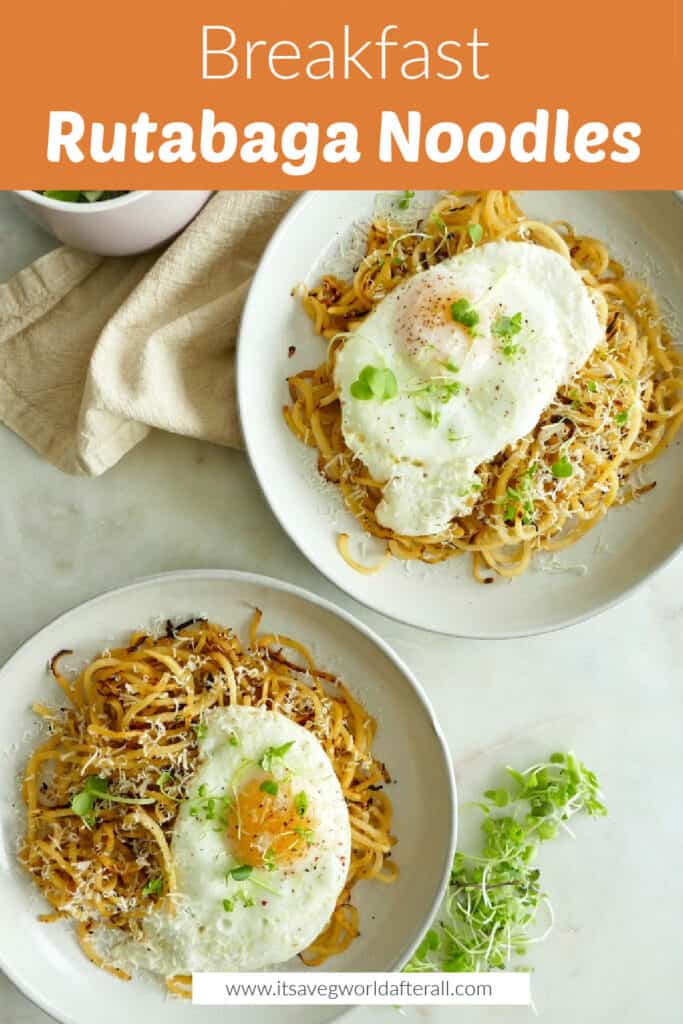
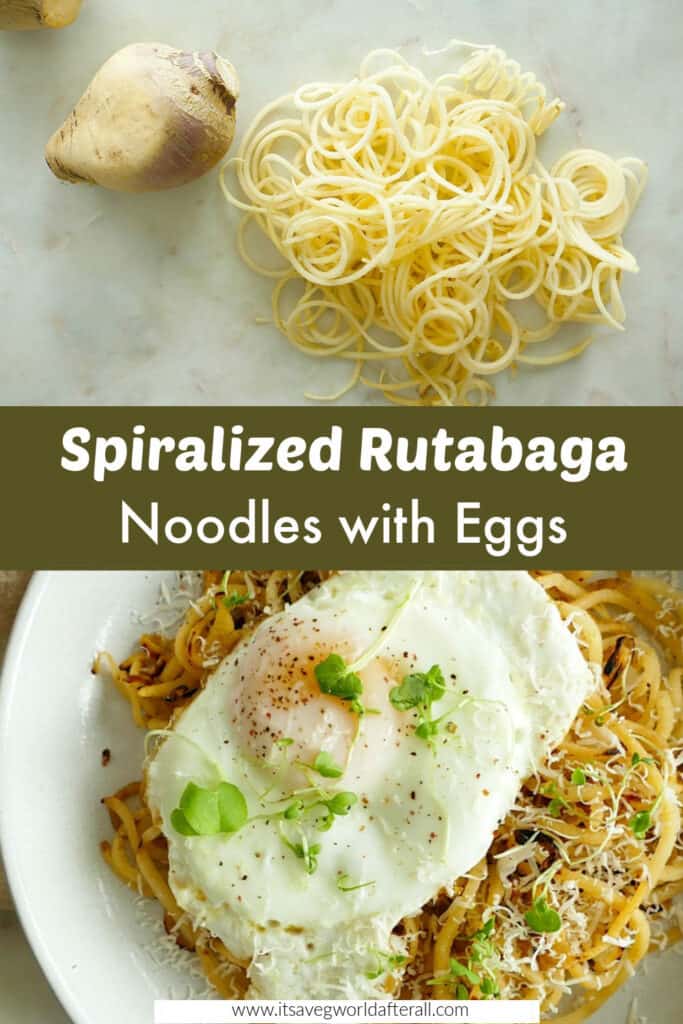
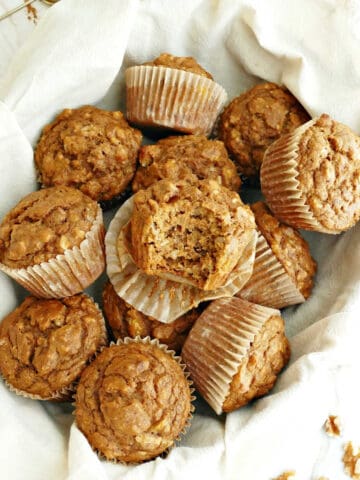
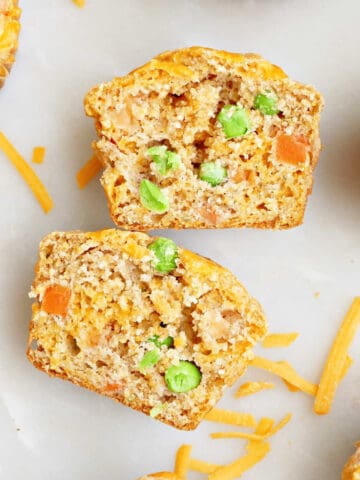
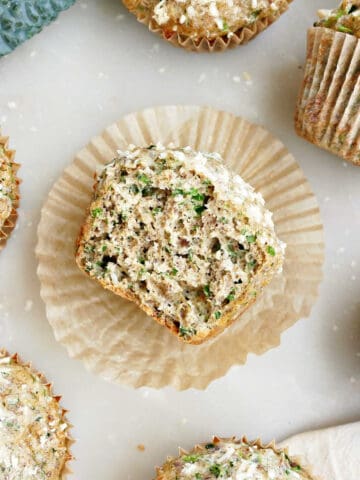
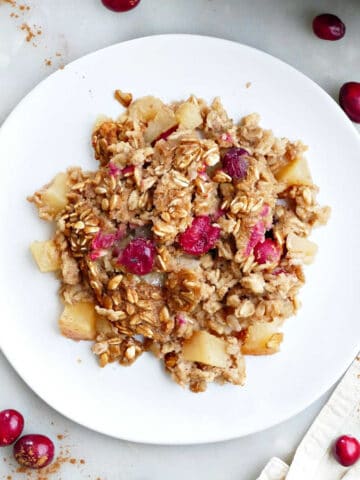
Comments
No Comments